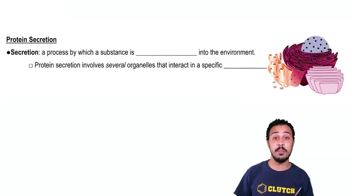Textbook Question
Cells that line your intestines are known to possess a large number of membrane proteins that transport small molecules and ions across the plasma membrane. Which of the following cell structures would you expect to be required for this characteristic of the cells?a. the endoplasmic reticulumb. peroxisomesc. lysosomesd. the cell wall
1425
views






